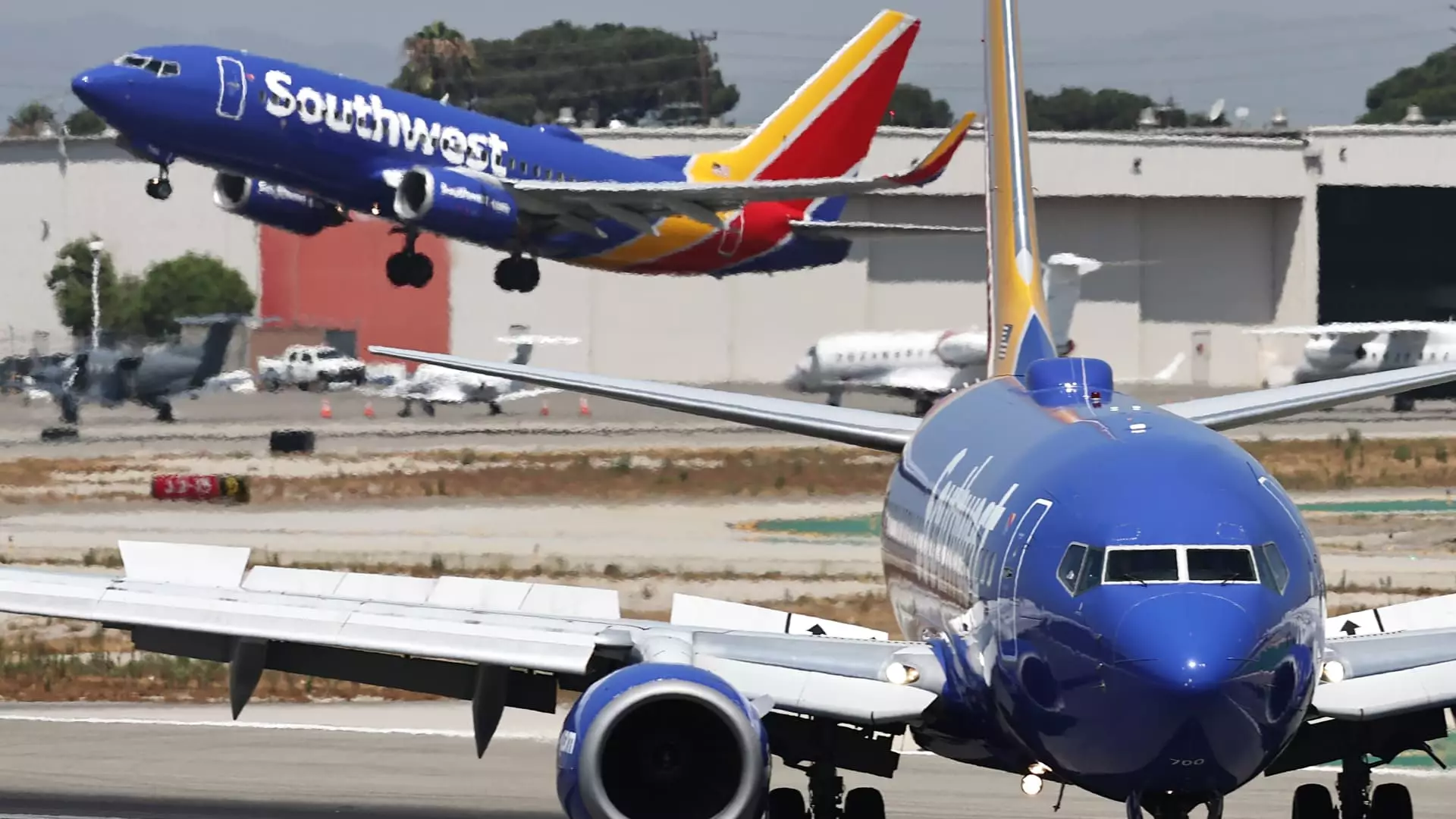Southwest Airlines is undergoing a significant transformation as it navigates an increasingly competitive landscape and responds to pressure from activist investors. Recently, the airline raised its third-quarter revenue forecast, signaling a positive trajectory despite ongoing challenges. The updated prognosis revealed expectations for unit revenue to climb by as much as 3% compared to the same quarter last year, a notable turnaround from earlier predictions that indicated potential declines. This improvement can largely be attributed to the influx of rebooking traffic from customers originally scheduled to fly on airlines impacted by the CrowdStrike outage in July.
Furthermore, the decision to authorize a substantial $2.5 billion share buyback reflects Southwest’s commitment to enhancing shareholder value. This financial maneuver is indicative of the company’s determination to reassure its investors and strengthen its stock performance amid external pressures.
In an effort to bolster its strategic direction, Southwest has appointed Bob Fornaro, a seasoned industry figure with a rich background in aviation, to its board of directors. Fornaro’s extensive experience includes a significant tenure as CEO of Spirit Airlines and a key role in the merger with AirTran, which has equipped him with a strong understanding of the operational landscape. His appointment symbolizes Southwest’s acknowledgment of the need for experienced leadership as it contends with challenges presented by activist Elliott Investment Management.
Elliott’s vocal calls for a leadership overhaul have intensified the scrutiny on Southwest’s senior management, led by CEO Bob Jordan. As the airline prepares for an important investor day presentation, Jordan and his team face the critical task of convincing stakeholders that their strategic initiatives are adequate for securing a profitable future.
In a move that signals a shift in its operational model, Southwest has introduced significant modifications, such as assigned seating and extra-legroom options. These changes not only aim to enhance customer experience but also hold the potential for generating additional revenue streams. Such adaptations diverge from the airline’s historically simplistic model, showcasing a willingness to evolve in response to market demands.
Despite these innovations, Southwest remains steadfast in its approach to baggage policies. The airline reaffirmed its commitment to allowing two complimentary checked bags, a policy that the management claims fosters customer loyalty and enhances market share, overshadowing potential revenue losses from baggage fees. This stance reflects an understanding of brand identity in a price-sensitive industry, even as critics question the sustainability of such offerings.
On the operational front, Southwest has announced impending reductions in service in Atlanta, which could lead to job cuts exceeding 300 positions among flight attendants and pilots. This difficult decision underscores the necessity of cost management as the airline strives to streamline its operations and bolster profitability.
Adding to the turbulence, Gary Kelly, the airline’s executive chairman and previous CEO, has announced plans to retire by the end of next year. His departure adds another layer of uncertainty to the organization’s leadership landscape at a time when Elliott’s criticisms of management effectiveness persist.
As Southwest Airlines charts its path forward, the combination of proposed strategic changes, operational adjustments, and leadership transitions is crucial. Stakeholders will be closely monitoring the airline’s ability to execute its new vision, restoring investor confidence while striving for sustainable growth in an ever-evolving aviation market.

